Remember when kitchen counters weren’t staged for Instagram or Pinterest? Back in the day, our kitchen counters were functional workspaces where certain items earned permanent residency. These stalwart countertop citizens weren’t just appliances or decor—they were fixtures of daily life that signaled a home was being lived in, not just displayed.
1. The Coffee Percolator
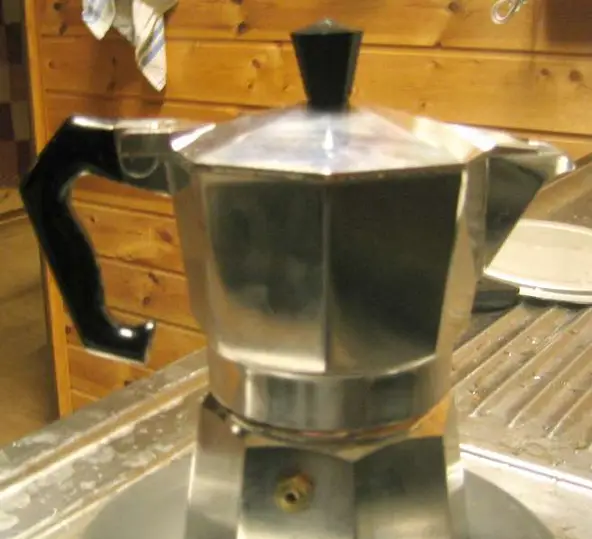
That gleaming metal coffee maker with its familiar gurgling sound was the morning alarm clock before we even opened our eyes. The percolator took center stage on most countertops from the 1950s through the 1970s, never tucked away because it would be called to duty at dawn the very next day. Mom and Dad wouldn’t dream of moving it, as its position designated the “coffee station” where mugs and sugar bowls congregated nearby. Serious Eats takes a swig of the history of the percolator on its own, and its place in the grand history of coffee as a beloved beverage.
For many households, the percolator was eventually replaced by the automatic drip coffee maker in the late 1970s and 1980s, but the principle remained the same. These coffee machines earned their counter space through daily use and the promise of that first morning cup that made facing the day possible. The ritual of preparing the coffee grounds and water the night before was as much a part of bedtime routine as turning off the lights.
2. The Toast-R-Oven

That boxy little toaster oven did everything from browning bread to heating up TV dinners before microwaves took over our kitchens. This versatile appliance often claimed valuable real estate right under the cabinets, sometimes with a special heat-resistant mat underneath to protect the countertop. Its constant presence reminded us that a quick cheese melt or reheated slice of pizza was never more than a few minutes away. Prezi takes a spin down memory lane to explore a timeline all about the toaster oven.
The Toast-R-Oven’s permanent spot was partly practical—it weighed a ton compared to today’s lightweight appliances—and partly due to near-daily use. Those metal coils glowed orange at least once a day in most homes, whether for breakfast toast, after-school snacks, or warming dinner rolls. Even when newer models came along with digital displays and additional features, they inherited the exact same spot on the counter, as if the location itself was sacred.
3. The Butter Dish
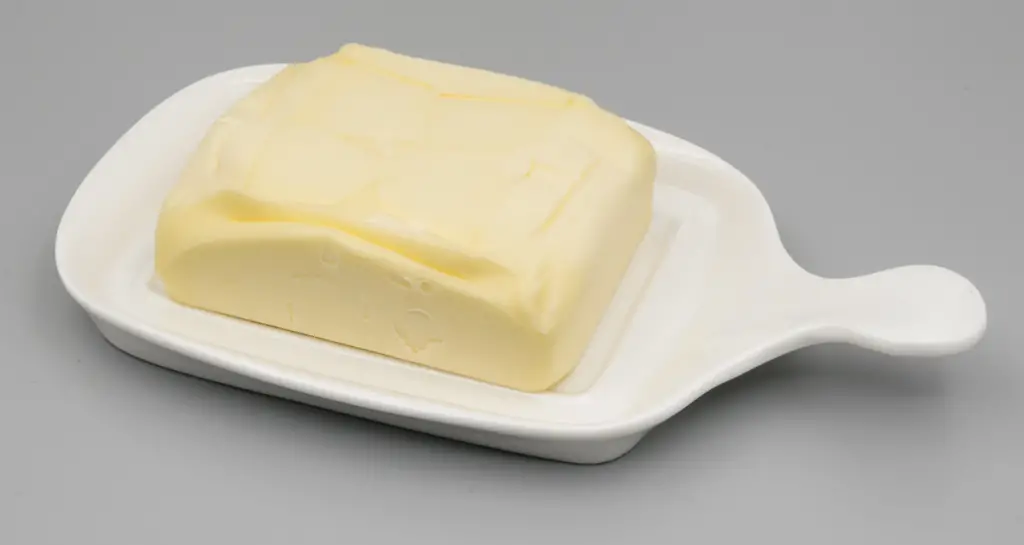
That ceramic butter dish with the lid that never quite matched the bottom remained a constant presence, slowly traveling across the counter as family members helped themselves. Whether it was a simple white dish or an ornate family heirloom, keeping butter at room temperature was non-negotiable for a generation raised on toast, baked potatoes, and corn on the cob. The dish would occasionally make brief appearances in the refrigerator during summer heat waves, only to return to its rightful counter spot once temperatures became reasonable. Eater insists that of all the very specific kitchen gadgets out there, a glass butter dish is worth buying.
Over the years, the butter inside might have changed from stick to tub, from salted to unsalted, but the dish itself remained. It witnessed thousands of family meals, from hurried breakfast toast to holiday dinner rolls, collecting tiny knife marks on its surface like a record of family history. Children grew up knowing exactly where to find it, and guests could help themselves without asking, because some things in the kitchen were simply understood constants.
4. The Recipe Box
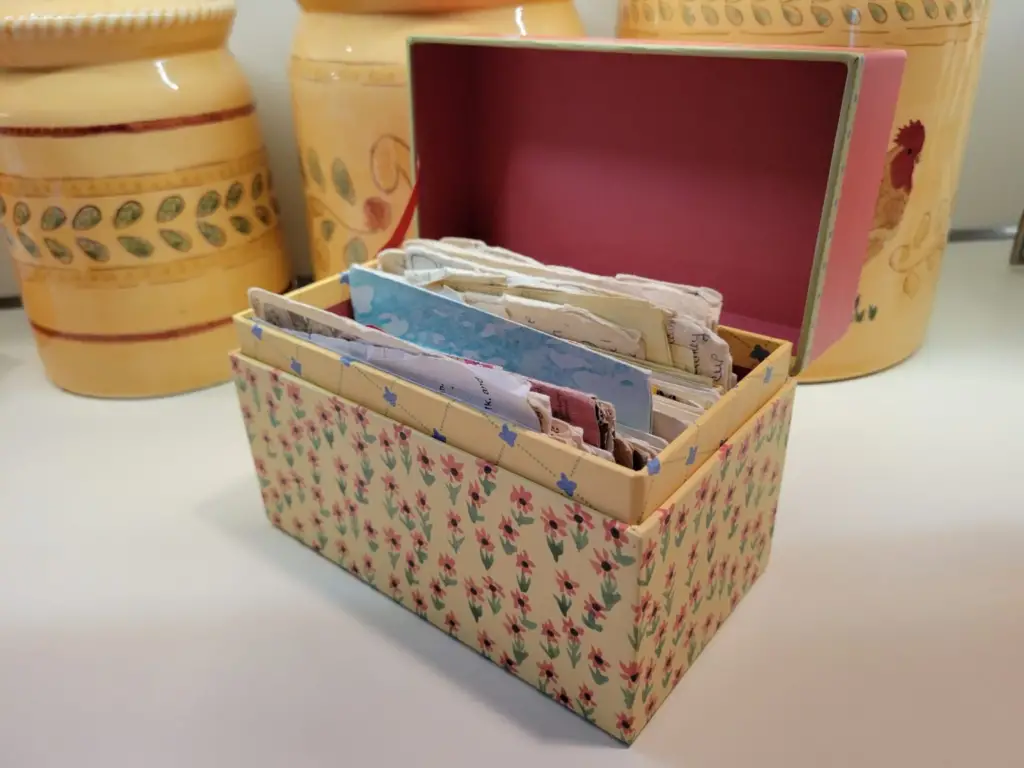
That metal or wooden box stuffed with handwritten cards and newspaper clippings was the family’s culinary archive long before digital recipe collections. Its placement was strategic—close enough to the cooking area to be useful but far enough from spills and splatters to protect the irreplaceable instructions for Grandma’s apple pie or Aunt Dorothy’s meatloaf. The recipe box was frequently opened but rarely moved, growing fuller with each passing year as new favorites earned their place in the collection.
Inside were the stained and faded recipe cards that told the story of family gatherings, holiday traditions, and everyday meals that defined home. Some cards contained more than ingredients and instructions—they held memories of the relatives who shared them, complete with personal notes about substitutions or serving suggestions. The box represented culinary continuity, ensuring that despite changing times and trends, certain beloved dishes would always taste exactly as they should.
5. The Cookie Jar

That ceramic container shaped like a rooster, a mushroom, or a simple lidded pot was the site of many a sneaky between-meal treat. The cookie jar occupied premium counter space, often in plain sight but sometimes strategically positioned just out of reach of small hands. Its contents might vary from store-bought Oreos to homemade chocolate chip cookies, but its presence was a comforting constant, promising sweetness was always available in a home where love was measured in baked goods.
The telltale clink of the lid being replaced too quickly was the universal sound of cookie theft across America’s kitchens. Parents developed selective hearing about these minor raids, understanding that the cookie jar served an important purpose beyond mere storage. It was, in many homes, the first place visiting grandchildren would look, and keeping it filled was an unspoken duty that continued long after children had grown and moved away.
6. The Napkin Holder
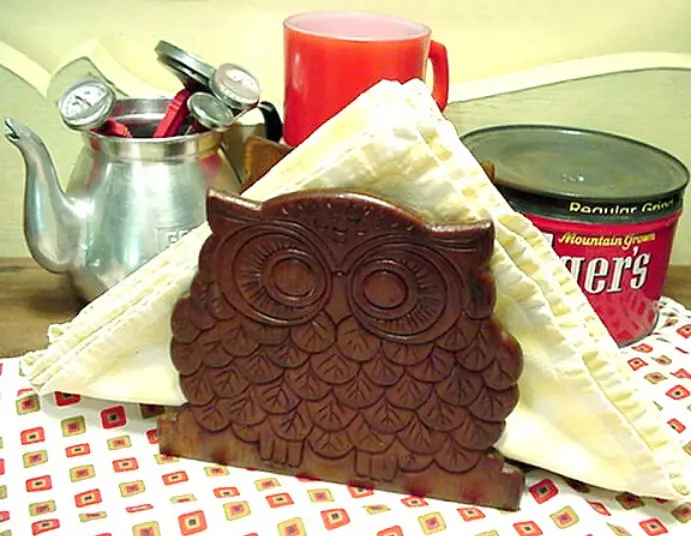
That simple wooden or metal contraption kept paper napkins from blowing away whenever someone opened the back door. The napkin holder stood ready for meals, spills, and the occasional makeshift grocery list when nothing else was handy. Its design might have been practical or whimsical—perhaps shaped like a rooster or adorned with a decorative weight—but its function remained steadfastly utilitarian in a world before paper towels became the go-to solution for everything.
Square white napkins gave way to colored and patterned ones as decorating trends changed through the decades. Holiday-themed napkins would make seasonal appearances, marking the passage of time even as the holder itself remained unchanging. Children learned table manners by being reminded to “take a napkin” before meals, and the holder’s location became so ingrained that family members could reach for it without looking.
7. The Canister Set

Those matching containers for flour, sugar, coffee, and tea were as much decor as they were functional storage on countertops across America. The canister set’s style evolved from metal to ceramic to plastic and back again, reflecting each decade’s aesthetic while maintaining its prime counter position. Mothers and grandmothers would refill them from larger bags stored in pantries, ensuring ingredients for spontaneous baking projects were always within arm’s reach.
The largest canister invariably held flour, its contents depleted and replenished through countless batches of cookies, cakes, and Sunday morning pancakes. The daily rhythm of spooning sugar into coffee cups or tea glasses kept another canister in regular rotation, its lid developing a characteristic ring from countless damp spoons. Even as cooking habits changed and packaged foods became more common, these canisters maintained their place, symbols of domestic continuity in changing times.
8. The Fruit Bowl
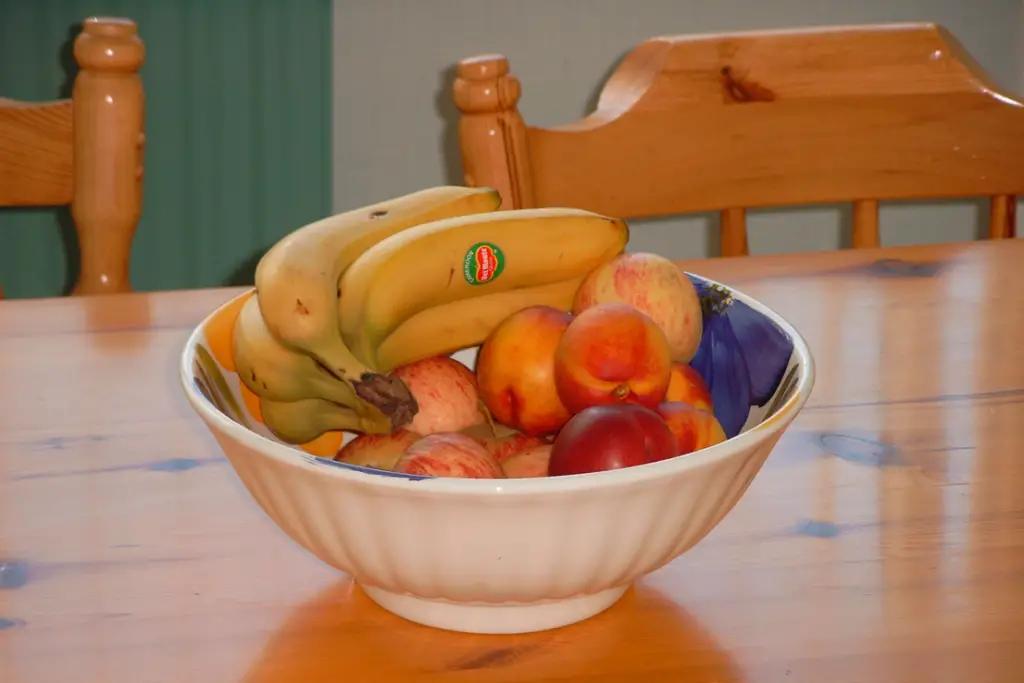
That wooden, ceramic, or glass bowl filled with apples, oranges, and bananas was the original grab-and-go snack station. The fruit bowl’s contents reflected the seasons—apples in fall, oranges in winter, peaches and plums in summer—providing a naturally colorful centerpiece when countertop styling wasn’t yet a consideration. Children knew where to look for a quick snack that wouldn’t spoil dinner, and parents encouraged healthy eating simply by keeping this bounty visible and accessible.
The bowl itself often told a story—perhaps a wedding gift, a vacation souvenir, or an inherited piece from a grandmother’s kitchen. As fruit ripened, the contents would be rotated, with bananas achieving the perfect yellowness before the inevitable brown spots appeared, signaling it was time for banana bread. The fruit bowl represented both abundance and practicality, a healthful display that served multiple purposes while adding a touch of natural beauty to the kitchen landscape.
9. The Spoon Rest

That small ceramic dish saved countless countertops from the drips and dribbles of cooking utensils in active use. The spoon rest might have been a matching piece to the kitchen’s dinnerware, a novelty item shaped like a chef or a chicken, or a handmade pottery gift from a child’s art class. Whatever its form, its function remained critical—providing a designated spot for sauce-covered spoons and spatulas during meal preparation when returning them to drawers would create mess and chaos.
Over decades of use, many spoon rests developed characteristic stains that no amount of scrubbing could remove—tomato sauce, gravy, curry—each adding to the patina of family meals past. Some households had several, rotating them through dishwasher cycles or saving special ones for holiday cooking marathons. Like many kitchen counter constants, the spoon rest was both utterly mundane and surprisingly personal, a small object that facilitated daily acts of nurturing and care.
10. The Bread Box

That wooden or metal container kept sandwich bread, rolls, and baked goods fresh and accessible for quick lunches and after-school snacks. The bread box represented a time before preservative-laden loaves with extended shelf lives, when bakery visits were more frequent and bread was too good to refrigerate. Its design might have been sleek and modern or country-kitchen quaint, but its position on the counter rarely changed, becoming part of the kitchen’s permanent landscape.
Opening and closing the bread box’s sliding top or hinged door was part of the soundtrack of household life, especially in homes with hungry teenagers. Some models featured cutting boards as lids or built-in knife slots, increasing their functionality and ensuring their counter status. The bread box survived the introduction of plastic bags with twist ties and even the popularity of frozen bread products, maintaining its place through sheer practical necessity and force of habit.
11. The Paper Towel Holder

That vertical post or wall-mounted rack kept the increasingly essential paper towel roll within reach for everything from spilled milk to greasy hands. The paper towel holder marked the transition to more disposable housekeeping methods, appearing on countertops nationwide throughout the 1960s and ’70s as paper products became kitchen staples. Its placement was strategic—usually near the sink or stove where messes were most likely to occur and quick clean-up was essential.
The holder itself might have been plain or decorative, matching other kitchen accessories or standing alone as a purely functional item. Children growing up with paper towels quickly learned the one-handed tear technique, sometimes resulting in half the roll unspooling across the floor. The steady consumption of paper towels became a household rhythm, with the empty cardboard tube signaling yet another item for the perpetual shopping list.
12. The Knife Block

That wooden block with slots of various sizes kept sharp implements safely organized yet immediately available for meal preparation. The knife block represented a serious approach to cooking, a step up from the drawer full of mismatched cutlery that characterized many post-war kitchens. Its prominent counter placement signaled the household’s commitment to proper tools and techniques, even if not everyone who used those knives had professional culinary training.
Over time, the block would often become incomplete as knives were lost, broken, or simply wore out from decades of slicing, dicing, and carving. New knives rarely matched the original set perfectly, but they filled the empty slots and joined the ranks of essential tools. The knife block was both practical storage and subtle status symbol, often positioned where visitors could appreciate that this was a kitchen equipped for serious cooking.
13. The Salt and Pepper Shakers
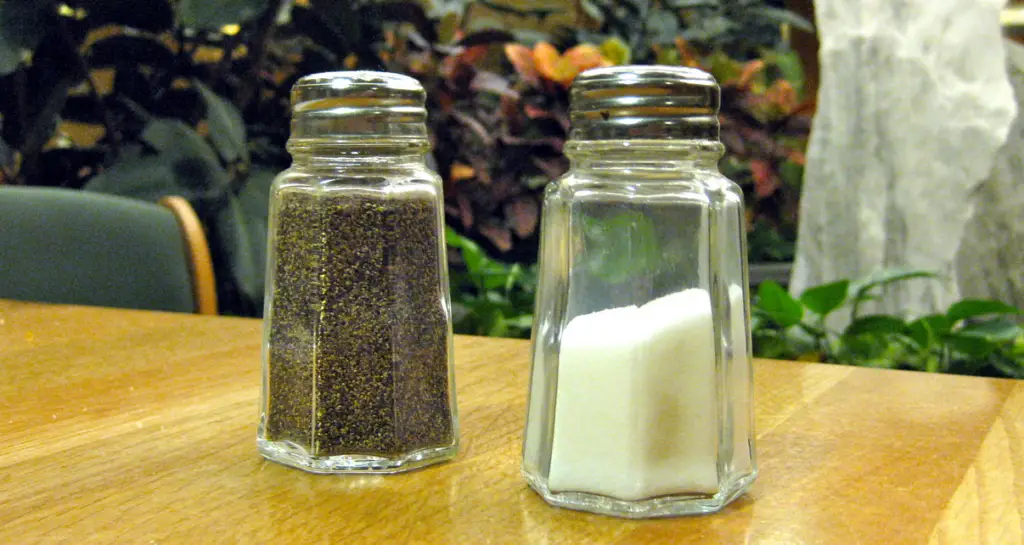
Those matching containers—whether elegant crystal, novelty figurines, or simple glass models—remained within arm’s reach for last-minute seasoning adjustments at the table or stove. Salt and pepper shakers were often the smallest permanent residents of the countertop, but their importance to everyday cooking and dining made their presence non-negotiable. Their placement near the cooking area reflected the understanding that properly seasoned food was a basic requirement of good home cooking.
Many households had multiple sets—everyday shakers for family meals and special occasion pairs for holiday gatherings or dinner parties. Refilling the pepper grinder or emptying caked salt from a humid shaker was part of kitchen maintenance that connected generations of home cooks. Despite changing dietary advice about sodium intake and the introduction of exotic spice collections, salt and pepper maintained their primacy as the fundamental seasonings no kitchen could do without.
In today’s world of spotless, staged kitchens and minimalist design aesthetics, the permanently occupied counter seems almost quaint. Yet these fixtures of daily life served as anchors in busy households, creating a visual shorthand for “home” that many still find themselves nostalgic for. Perhaps in our rush to clear our counters and hide our appliances behind cabinet doors, we’ve lost something of the lived-in warmth that these everyday objects provided.


